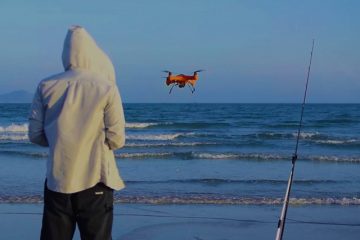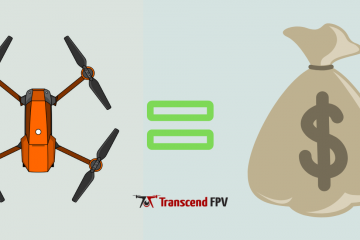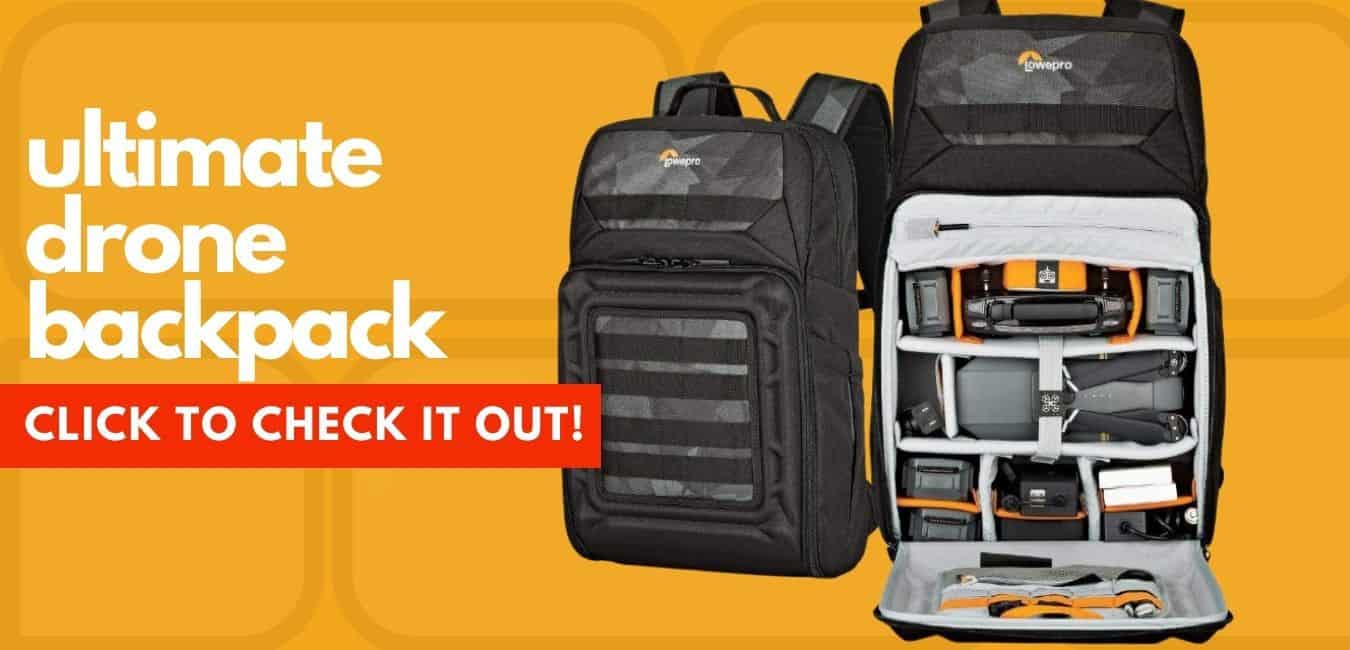How To Get Better At FPV Drone Racing: Ultimate Guide 2020
TranscendFPV is a reader supported product and review site. Clicking on links to learn more, or buy products, may earn us money, and support our work. Learn more about the history of TranscendFPV and our passion on our About page.
So you want to become a better FPV drone racer, right?
There’s actually a lot involved here, so sit down and get comfortable. But don’t worry, I’ll break it down in very small simple steps so you won’t feel overwhelmed. Drone racing is hard but if you practice in the right way, you’ll make big progress faster.
Things you’ll need
There are a few things you’ll need before becoming a better drone racer, and they are:
- An actual drone (An indoor FPV drone like the BETA65 is a great place to start. That link goes to my personal 9 month long REVIEW of the BEta65, which I consider the best indoor FPV drone ever)
- Some FPV goggles (That’s our list of the best and most value for money goggles we can find this year)
- A transmitter (Small beginner drones will come with a transmitter, others need you to have one already and then you connect them up)
- A lot of patience (Seriously, drone flying is hard)
PRO TIP: Drone flying is hard to learn because there’s so many axis of motion when flying. You can fly in any direction, at any time, and that makes it hard to keep the drone from crashing into the ground. But like any skill, it can be learned by just breaking it down into small steps. Let’s go!
How to be a better drone racer
Like I’ve said, this is focused on becoming a better drone RACER, not a drone PILOT.
I think they’re different things. A pilot is more focused on commercial operations (if that’s what you’re after, check out our list of the best commercial drones!) and making money from flying drones, whereas a drone RACER is more focused on things like fun, freestyle and competition.
Drone racing competitions CAN give you money also, but it’s a lot harder to actually earn any sort of reliable income from racing drones. That being said, racing is more fun especially freestyle and things like that.
Let’s dive in:
1: Practice in the drone simulator first
A good FPV drone simulator will save you HOURS of time and LOTS of money.
By practicing those difficult moves in the simulator, you’ll not only make it easier to learn because you don’t stress about crashing your drone, but it saves you money. The truth is, most drone ‘moves’ are ONLY learned by trying them and CRASHING over and over and over again.
It’s much better and more sensible (and safer) to have those first 1000 crashes in a simulator where nothing gets broken or hurt.
Also, it’s INSTANT to reset a crash in a simulator, but in real life you’ll have to put everything back together! You’ll also have to buy spare parts for your drone when it breaks.
You’ll learn a lot faster if you just practice in a simulator for 2-3 hours a day, while you’re building up your basic beginner drone racing skills. There are lots of drone sims to choose from, but to save yourself some time I’d suggest reading our list of the best drone simulators ever.
There are loads of simulators out there, but you want to get one that ACTUALLY simulates how your drone feels in real life, so check out our list to see what we think about the top ones! They’re also VERY cheap (if not free) which is another bonus!
2: Don’t invest in more than you can handle
It’s a common mistake to get excited about drone flying after watching a couple of videos, and then think you want to go ALL IN. People watch a video (or ten) and then order the most expensive, complicated drone equipment they can find online.
It arrives, they have no idea how it works or how to fly it, and they give up and it gets put on the shelf next to the old guitar and long board. Don’t be that guy. Start with small, easy to master bits of kit like the Redpawz R011.
The Redpawz R011 is a tiny FPV drone that you can fly indoors, it won’t break and it won’t damage anything if it crashes. BUT, it still has an FPV camera and goggles, and it’s very cheap. This is the best way of getting started without blowing your money on stuff you won’t know how to fly anyway.
Once you’ve mastered the tiny indoor FPV drone, and you can fly around without crashing into everything, THEN think about upgrading and getting a bigger more expensive and more complicated drone. The Redpawz is GREAT, and you can see it flying below:
3: Small slow steps is better
With drone flying, especially if you’re flying outdoors around people, you need to be safe and careful.
Take small steps, and only do things you know you can pull off. Don’t try and do crazy tricks on your first flight or in a brand new location you’ve not got to know very well yet.
You’re just asking for trouble if you do that, so start slow, and practice carefully. It’s better to actually practice more in the simulator than in real life, until you’re completely confident with the controls and how the drone flies.
Then look at going to a field or something open like that, with NO people around.
Then practice just flying around and getting hours of flight time logged. THEN look at learning and practicing tricks. Now of course you’re going to ignore that and try and fly cool tricks pretty soon, but you will crash more. Just saying.
4: Once you’re outside, pick a spot
A great trick is to get good enough to fly outdoors (and deal with small gusts of wind as well!). THEN, pick a spot like a park (with no people in it) or a tree with low hanging branches and obstacles. And then just fly round and round that spot over and over again.
Fly in random gaps and sort of ‘improvise’ where you’re flying in the moment. This is the fastest way of getting good at flying freestyle and racing. Racing needs you to be adaptable and quick, so flying a spot that causes you to constantly find new routes is a great way fo learning.
Some of the best spots for this training are:
- Parks with lots of obstacles
- Trees with low hanging branches
- Indoor obstacle courses with furniture (if you have a small drone like the BEta65)
I did this indoors here:
5: Learn tricks in the sim then practice in real life
I’m going to mention this again here because it’s important. If you want to learn a particular trick like a yaw spin or a flip or whatever, learn it in the simulator first.
I can’t stress this enough.
A trick like a flip or a yaw spin is going to require a new set of movements for your fingers and thumbs so it’s important to make SURE you know it very well in a simulator before trying it in real life.
The reason is that you’re GOING to crash when you first try it. In fact the first ten or more times you try the trick you’ll probably crash. I’m still learning how to perfect flips indoors (outdoors is a lot easier because you have more altitude to play with).
It’s a constant learning experience, but the very first part of that journey is filled with crashes! Learn the tricks in a simulator and like I said, we made a big list of the best drone sims for you!
6: Proximity makes you better
Once you can easily fly around your house with your small FPV drone and you can fly round the park and field etc, you’re going to want to get CLOSER to objects to progress. This involves flying low to the ground, in and out of barriers, hoops, gates and obstacles.
The closer you get to the object the more it’s going to train your reactions and control of the drone. As with anything on this list, it’s better to practice it in a simulator first until you’re confident with it. Then when you get better, set up an indoor obstacle course in your house and fly your tiny drone through it!
I did this a while back and it was a great way to become a better drone racer pilot. Check out my OLD progress indoors here:
7: Fly indoors!
Leading on nicely from that last one, you should fly indoors more often. Depending on where you live, the weather might not always be great for drone flying. To fly outdoors the weather really needs to be dry, and also no wind.
The chances are the weather won’t be like this all the time unless you’re very lucky. So buy an indoor FPV drone like the Beta65 (That’s my review of it). It’s fairly cheap and it’s basically unbreakable. I’ve crashed that thing more times than I can remember and I’ve never had to fix anything on it.
By flying indoors you get used to controlling the drone in tight spaces and moving in and out of obstacles. Also you can record the flights and watch them back to get better.
8: Record your flights
With some FPV goggles you can actually record your flights and watch them back later. This is very useful for learning what you’re doing right or wrong. By watching the flight back you can see where you went wrong and what you can do to improve.
In fact, with almost any skill, it’s very useful to record yourself doing it to see what you’re doing right or wrong. Drone racing is no different. Plus if the footage is good you’ll have a really cool video to show off! Here’s a cool drone racing video I made in my house at Christmas time.
To record your flights, you’ll need to do some research on your particular drone.
If you’re just starting out and you have an indoor drone, you can record your flights fairly easily with these goggles (Amazon link to Fpv goggles that can record your footage onto a micro SD card).
If yo’ve got a slightly more advanced drone or if you’re already fairly skilled and flying outdoors etc, then you might want something with a bit better range like Fat Sharks or something like that.
Or if you’ve already got a bigger racing drone, you can literally strap a GoPro (GoPro Hero 7 Black is a good choice) onto the front and just press record on the physical camera. That way will give you MUCH better video quality!
9: Ask for advice
As with most things in life, you’ll get better results if you ask for advice and help along the way. Ask experts or pilots you see out and about for advice about your flying. Ask what you’re doing wrong.
If there aren’t any drone pilots around you just watch YouTube videos of good pilots and racers and see what they say. People like Mr Steele will make videos every now and then giving advice on flying and learning tricks etc.
There might be something you’re doing that you don’t even realise you’re doing wrong until someone else sees it and tells you. For this reason it’s also good to fly with a friend next to you to watch what you’re doing.
10: Take a break if you’re annoyed
Drone flying is hard like I said, and it can be discouraging at the beginning. I think that’s why it’s important to take a break if you find yourself getting annoyed because you can’ master a particular trick. Don’t panic and freak out!
Also, if you can’t get certain tricks, practice them in simulators and just sit back, relax and keep trying until you get it. Make yourself a coffee or something, relax and just know that even if you crash, you just hit the reset button and try again.
That’s much better than not only failing the trick, but having to pick up your expensive broken drone and go and solder it back together. You’re much more likely to stick with this hobby if you take your time and learn the tricks in a simulator.
11: HAVE FUN!
Above all else, just have fun with it. You don’t need to become a world class expert pilot or drone racer this year. You have a lot of time to play around with this and get better. Treat it like a journey. Just fly something every day and you’ll look back in a year and see how far you’ve come.
Questions about being a better quadcopter racer
There were a number of questions I kept getting emailed so I’ve answered them all here in little sections.
How hard is drone racing?
You may be wondering things like ‘are drones hard to fly?’. Well, yes they are. In most cases, flying a drone is something very different from anything you’ve ever controlled before. You might have had a remote control car as a kid, but this is far from that.
Drone racing and flying involves movements in almost every direction, and balancing several things all at once while also avoiding objects and moving around the world. It’s very difficult to learn for beginners but that doesn’t mean you shouldn’t!
The level of difficulty really depends on which MODE you’re flying. If you’re flying in ‘self leveling mode’ then it’s a whole lot easier. Basically self levelling means it will never just flip and crash into the ground, it will always stay level and flat when you take your hands off the controls.
Manual or ‘acro’ mode however, doesn’t have that safety feature. To flip and do those crazy freestyle and racing moves, you’ll need to learn manual mode, and THAT is difficult.
How fast are racing drones?
Racing drones in general fly at about 50-70MPH.
Some of the more expensive and specialist drones can actually reach over 100MPH but they’re not very common. Most peoples racing drones will do about 50MPH or so in any direction.
For indoor drones like the BEta65 and other small ones, it’s nowhere near that fast. Racing drones refers to bigger and heavier drones that are typically flown outdoors and use a much more powerful battery and motors.
Useful things you might like:
- The best FPV goggles (If you’re not sure which ones to get or if you’re just getting into this, read that!)
- The top 5 drones for your FIRST drone (Again, this is to help beginners choose a first drone)
- DJI Spark: Not a racing drone by any means but it’s the best cinematic drone for getting high quality videos!



